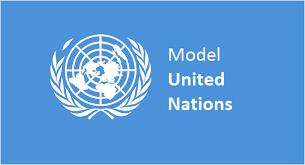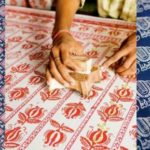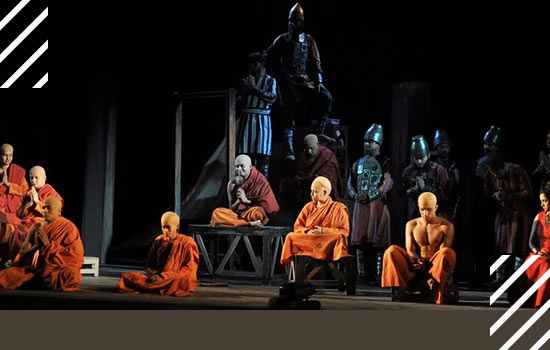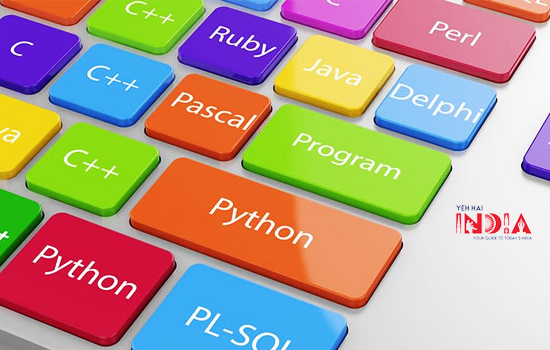Interested in MUN? Here’s how it works.
Debate, Politics and Global issues. If any of these 3 things appeal to you as a teen, then go ahead and read this article because Model United Nations is the best thing that can ever happen to you!
Let’s figure out the basics of MUN and its key aspects:
- What is an MUN Conference
- The Committees and Agendas
- The Roles
- The Procedure
1. What is an MUN Conference?
An MUN Conference, in brief, is a simulation of a United Nations Conference or Assembly. Participants are expected to represent their assigned nations as a diplomat/delegate to resolve an issue using their skills of debate, research, lobbying and more. MUN involves a lot of concepts and it is important to know them all in detail.
2. The Committee and Agenda
Committees
Each conference has a variety of committees which look into different agendas. Each committee has specific characteristics and participants need to understand their committee well.
Furthermore, the agenda will always be set in accordance with the committee and its characteristics.
Listed below are a few examples of MUN committees
- The United Nations Security Council (UNSC)
- The United Nations Human Rights Council (UNHRC)
- Disarmament and International Security Council (DISEC)
- The International Court of Justice (ICJ)
- World Health Organization (WHO)
These are just a few examples of key committees. Some conferences make up their own committees. For example, they might have a Historic Security Council, or a OPEC Committee as well. A committee can be any type of Intergovernmental Organization (IGO).
Agendas
As mentioned earlier, the agenda will be relevant to the committee.
For example, a possible agenda for the WHO can be to create a joint action response to a potential pandemics.
The World Health Organisation deals with topics like diseases and health problems across the world. Hence, an agenda about planning for potential pandemics is relevant . However, having the same agenda in the International Court Of Justice committee will not be relevant.
An agenda can be any global issue varying from famine and poverty to things like climate change.
Sometimes, committees can have a crisis. This means that the agenda being discussed will be modified as the conference progresses.
So how does a committee work in a crisis situation?
Let’s say that the agenda is about extremist presence in Afghanistan. Before you will come to the conference, you are expected to have done your research on that topic. However, during the conference, the chairpersons (who we will get to later) will be adding some important information (which is made up). This will mean that the topic will take some unexpected turns and that not all of the information is true.
3. Roles
a) The Delegate
Becoming a Delegate of a Nation requires a lot of work.The first possible role that one can be is that of a delegate. A delegate is a representative of the assigned country. A majority of the members present in a conference are delegates.
If you are the delegate of a nation, these are the things you need to do:
1. Research on the Agenda and Committee
- Firstly, you should research on the topic that the committee will be discussing. You should know the topic in and out. In particular, you should look at the countries involved, shocking statistics and the timeline of the event. This will help you with debate throughout the conference as you will have a very good idea about everything being discussed.
- Know your committee well. As mentioned before, each committee is different. Delegates must be aware of their committees history, procedure and participating nations. These things will prevent you, the delegate from being lost during the conference.
2. Research on the nation you are Representing

- Now, you will have to study the country you are representing. Through research, you should find out the allies and enemies of the nation. This is important because you should know who you should support or oppose as the conference progresses.
- You should also know the local problems and other important pieces of information about the country you represent. This is important because other delegates may try and attack your country using arguments about these problems.
- Finally, you will need to learn about the assigned country’s stance on the issue. This is perhaps the most important thing to do. Delegates need to know in detail about their country’s stance on the issue. This is where the research on allies/enemies and the topic will come in handy as both those things make it very easy to figure out the stance.
- Moreover, you should also look into past actions of the country regarding the issue (treaties signed, military actions, humanitarian aid etc)
3. Prepare Speeches and Solutions

- The main point of an MUN is to debate with other delegates about the concerned agenda. This is why preparing proper speeches is of utmost importance.
- Delegates must prepare different types of speeches (explained a little later) which are relevant, persuasive and obviously, matching the country’s stance. This is a skill that you need to develop if you wish to do well.
- Also, as the delegate is not representing himself or herself, they cannot use personal pronouns (e.g., “you”, “I” or “we”).
- An MUN conference finishes when delegates are able to pass a resolution through voting. This is what the conference was called for in the first place (remember, we are simulating what goes on in the UN). This is why it is extremely beneficial if you as a delegate start to think of solutions to the issue even before you come to the conference.
- However, as explained earlier, it is of vital importance that you keep in mind your country’s stance and past actions as their solutions cannot contradict any of those, at any condition.
b) The Chairperson
The other role during a conference is that of a chairperson (Chair for short) or Director. This is a very important position which is usually only given to experienced MUNers.
- The Chair is the judge and the moderator of the conference at the same time.
- The Chair needs to make sure that proper procedures are duly followed.
- Chairs are also meant to regulate caucuses (explained later), selecting the delegates speaking along with conducting voting.
- Furthermore, they also take the roll call (which is like attendance for the delegates) along with passing the resolution with the most votes.
4. Procedure of Model United Nations
All MUNs follow a procedure. A procedure is extremely important as a lot of things need to be done throughout the duration of the conference, in the right order.
- Firstly, delegates need to explain to the committee about their opinion of the topic.
- Next, delegates must debate amongst each other about the issue and its impacts.
- Post this the delegates move on to making alliances and writing resolutions.
Therefore, there are 2 main formats of the procedure
a) HMUN/UNA-USA Procedure

Firstly, there is the HMUN procedure (this is one of many names for this type of procedure, other names include the UNA-USA procedure). The HMUN procedure is definitely the most popular format. Most conferences adhere to this type of procedure even though they might change small things and call it something else.
The different stages of this procedure are as follows:
- Roll Call
Roll Call happens at the very beginning of each committee session. Delegates can either say ‘Present’ or ‘Present and Voting’. The difference between the two is that if the delegate chooses to say the latter, they may not abstain for any rounds of voting, however, they may if they just said ‘Present’.
- General Speakers List (GSL)
The next step is the GSL. In this step, delegates may ask to speak with the chairs permission. The goal of the GSL is for delegates to express their country’s view on the topic. This is the opening speech that the delegate will give. This is why, it will include the country’s stance, past actions and some raw solutions on the issue.
- Moderated Caucus
The moderated caucus is a way of discussing sub topics in the issue. The reason this is so important is because it is really difficult to discuss the topic as a whole. Thus, delegates take turns in advocating their opinion on that matter followed by a few questions (Points of Information) by other delegates.
Let’s say that the agenda is the European Migrant Crisis, a moderated caucus topic can be the health and welfare of incoming refugees. This is a smaller issue to look at which can be discussed by the committee.
- Unmoderated Caucus
An unmoderated caucus is very much different from the moderated one. Here, delegates are free to move around, informally talk among one other. Usually, the main objective of an unmoderated caucus is to draft resolutions. Delegates form blocs/alliances to draft resolutions to the given agenda.
- Presentation of Draft Resolutions
After the resolutions have been drafted, they are presented. Usually there are only 2-4 resolutions on the table for discussion. Delegates present their resolutions which are then followed by questions, amendments and debates. Delegates can participate in things like 3v3s etc as well.
- Voting and Passing of Resolution
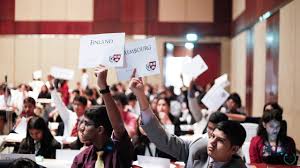
Finally, after all the resolutions have been presented, they are then voted upon. Delegates who said ‘Present’ during roll call may abstain from voting. For a resolution to pass, there must be at least a 2/3rds majority for the resolution.
After a resolution passes, the conference is over.
b) The Hague International MUN (THIMUN) Procedure
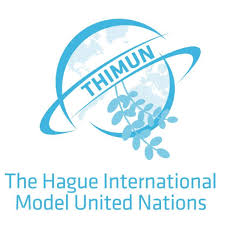
Most conferences follow some version of the procedure mentioned above. However, there is another procedure known as THIMUN procedure.
This type of MUN is focused mainly towards the resolution and requires all delegates to individually draft a resolution before they even come to conference.
Here’s how it works:
- Lobbying and Resolution Merging
This first step is assigned for delegates to roam around freely and form blocs/alliances among fellow delegates. They then need to merge their resolutions into one big one which will then be submitted to the chair.
- Discussion of Resolutions
After blocs have been formed and resolutions merged, delegates will then need to present their resolution followed by questions from the committee. Delegates are expected to debate among one another about the resolutions presented.
- Amendments
Delegates can make amendments to the resolutions based on the discussion which took place previously. These can be made by any delegate from the committee.
- Voting
The committee will then be voting on the amendments for the different resolutions followed by the finalisation of those resolutions. Finally, the committee will be voting on the resolutions in a similar fashion to that of the HMUN procedure.
Some other procedures include UN4MUN which is also a highly used format these days and is by UNIC India.
That concludes the introduction to the concept of MUN!
If you are looking to join this wonderful community then going to an MUN conference is the best way to do so!
There are hundreds of MUN conferences which happen yearly in India and they vary in size (in terms of participation) from small to very big.
Here are three of the biggest and most prestigious MUNs in the country:
- HMUN Hyderabad (Organized by Harvard University, USA)
- WIMUN Agra (Organized by The World Federation of United Nations Associations)
- IIMUN (Organized by India’s International Movement to Unite Nations)
There is still so much more to learn about MUN and the best way is to just go to a conference! There is no better way to learn tons of new stuff while developing loads of new skills as well.
MUN is an awesome opportunity which all students should take!
Also Read – The Need for Outcome-Based Education in India – Technical Education


